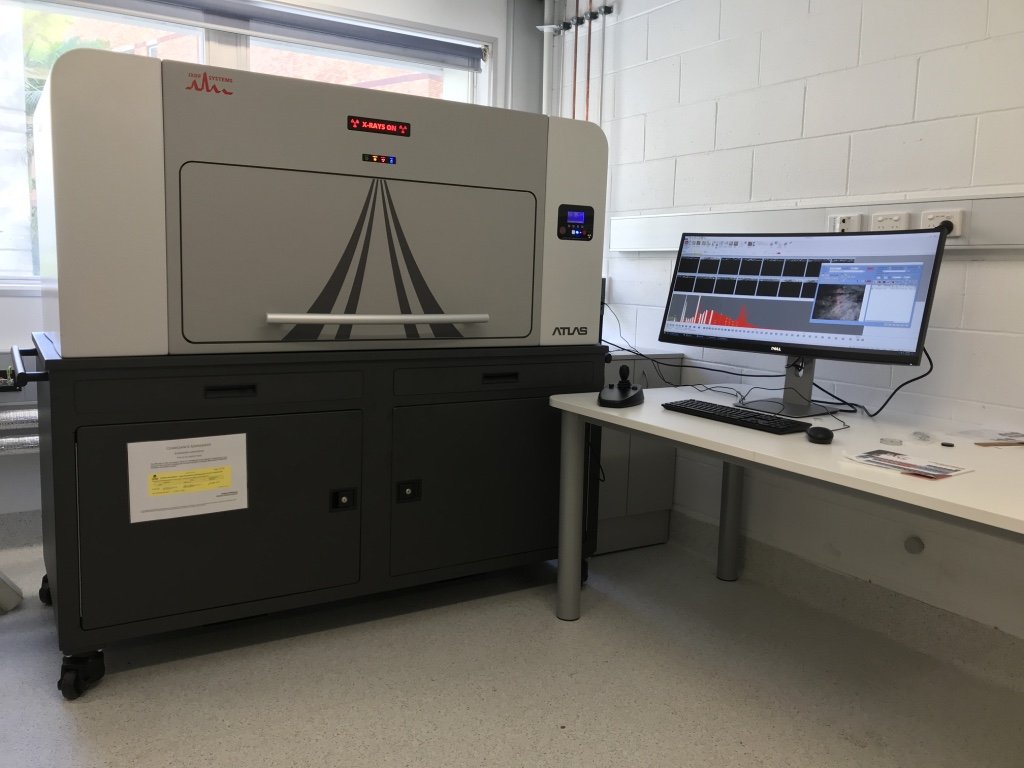iXRF ATLAS X XFM

X-ray fluorescence Microscope (XFM) is based on micro/small spot energy dispersive X-ray fluorescence spectrometry (XRF), a powerful technique that allows quantitative and non-destructive analysis and imaging of elemental compositions across large areas at very high sensitivity and moderate resolution, and under atmospheric conditions. A staple technique at synchrotrons worldwide, laboratory-scale instruments are surprisingly rare given the method’s wide applicability. The modified iXRF ATLAS X instrument in place at the CMM is capable of both mapping and spot wise analysis on samples up to 300 x 300 mm, at a resolution of 25 µm, for all elements heavier than Na, and can run at both low-vacuum and atmosphere.
Compared to SEM-EDS, XFM has an order of magnitude higher sensitivity for first row transition metals and most heavy elements, scans much larger areas, and can be performed under atmosphere with minimal sample preparation. It is an ideal first-line approach for many samples, allowing rapid analysis of composition and morphology over much larger areas than are practical by electron microscope without coating the sample, and identifying areas of interest for complementary EPMA, HRTEM, micro-diffraction and other localised studies.
The very high sensitivity and throughput of µXFM is also critical to a wide range of advanced applications, such as imaging elemental distributions in sensitive specimens, include live biological organisms (e.g., plants), detection and mapping of trace elements in a range of materials, and analysis of very large specimens such as geological cores.
The instrument’s specifications are:
• Scanning travel: 300 mm x 300 mm
• Spot size: Mo 25 µm / Rh ≈5 µm FWHM
• Source: Mo anode, 50W yielding 2 x 108 ph/s
• Detector: Silicon Drift Detector (SDD)
• Sensitivity: varies, <5 ppm for first-row transition metals, <<100 ppm for most heavier elements, light element detection from Na up
• Conditions: Atmosphere, Vacuum, and He blanket
• Analysis package: IXRF Iridium Ultra, GeoPixies
Location: Level 2, Chemistry Building
Contact: Dr Craig Stoppiello; c.stoppiello@uq.edu.au
Links:
Sample Identification Label - Large
Sample Identification Label - Small
